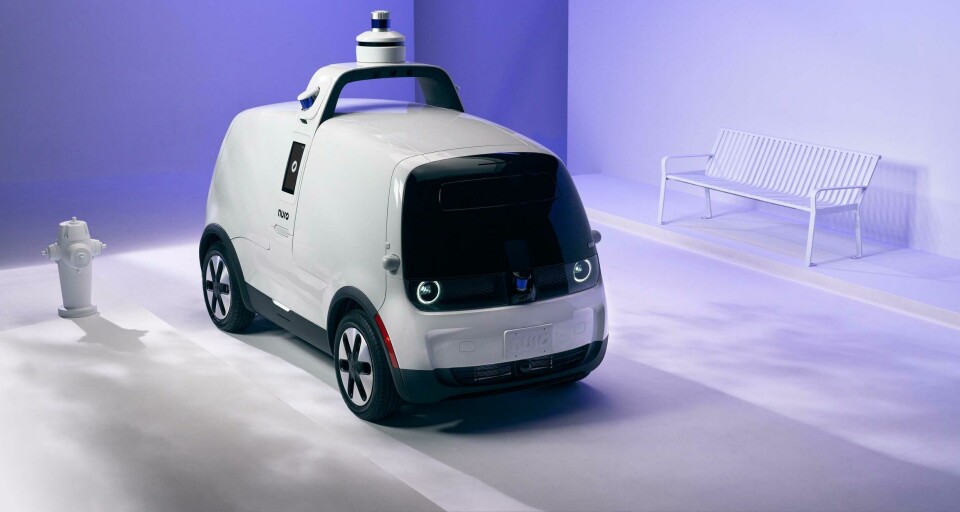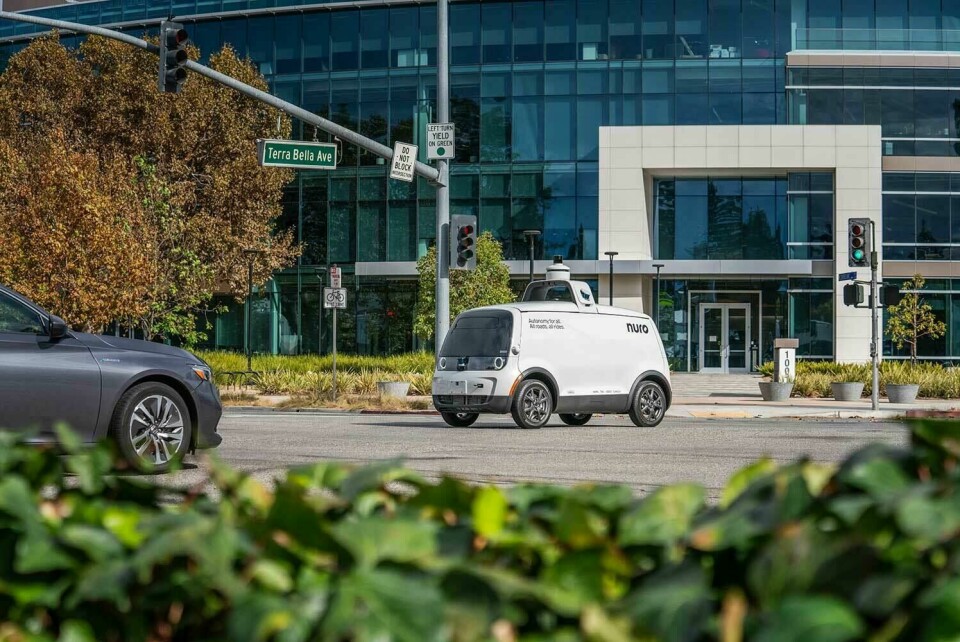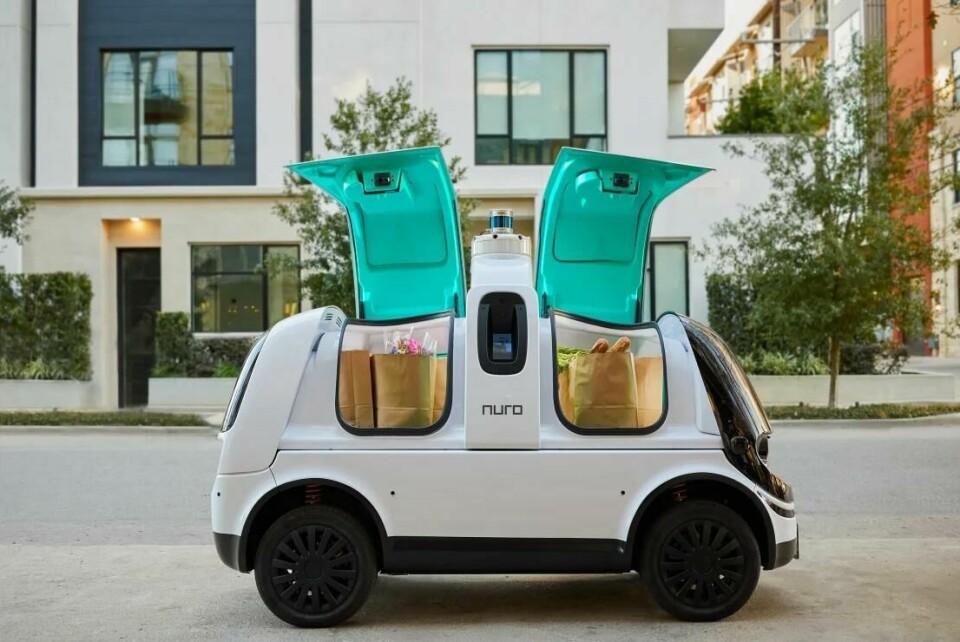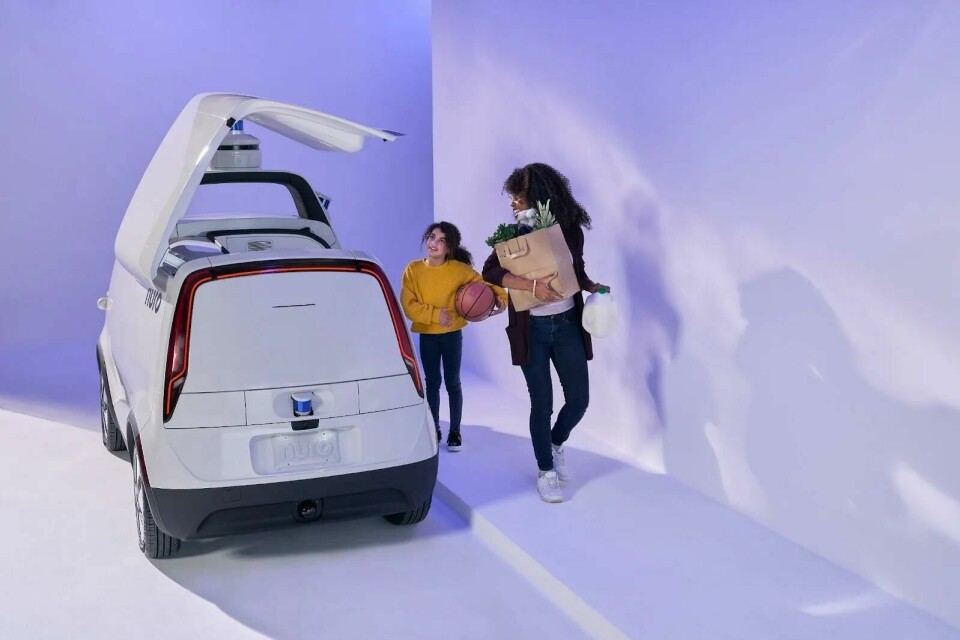
Nuro’s head of design talks autonomous pods
Autonomous vehicles need not be as cold and uninviting as we might first think, providing the focus lands on humanisation and smooth UX design
Founded in 2016 by Jiajun Zhu and Dave Ferguson, two former Google Waymo engineers, Nuro began life by developing Level 4 autonomous vehicles for goods deliveries. Shortly before completing trials, the company became the first ever to be granted exemption from low-speed autonomous vehicle federal safety requirements in the US. It has since expanded operations, and recently announced coverage in Mountain View and Palo Alto, California, as well as Houston, Texas, making it one of the largest L4 autonomous vehicle deployers in the country.

Nuro’s latest zero-occupant solution is called the R3, and is possibly as snazzy as it gets for a pod-like delivery vehicle. Two sizeable storage compartments open up from the same side with dual gullwing doors. These are split in half by an arch that rises from the centre of the vehicle and supports the main sensor stack. The front end is adorned by a glossy black window sitting above two round headlamps and another sensor placed in the centre of the face. It almost resembles a little character from the Pixar film franchise.
The company has also recently announced plans to share its AI-powered autonomy platform with carmakers, allowing them to leverage the technology to produce their own autonomous passenger vehicles and trucks. Speaking to Car Design News, Daniel Hundt, head of design at Nuro, explains the philosophy that underpins the company and emphasises the importance of unintrusive UX design.
Car Design News: How did you go about designing a functional autonomous delivery vehicle with an identity?
Daniel Hundt: Our design philosophy is built on two principles: effortless and human. Every detail – whether it’s the way you interact with our technology and the user experience, or the design of our vehicles – reflects our belief in humanising technology. We embrace the balance between the robotic and the human, creating technology that feels trustworthy, approachable and seamlessly integrated into daily life.
Our designs are never dystopian or futuristic for the sake of looking advanced. Instead, we focus on simplicity, with thoughtful moments that make using our technology intuitive and joyful. We want our vehicles to contribute positively to the communities they serve, blending into urban spaces in a way that feels natural.

Safety is at the core of everything we do, from features like pedestrian airbags to the compact, lightweight design of our vehicles which minimises risks for cyclists and pedestrians. Every design choice serves a purpose. For example, temperature-controlled compartments ensure groceries and other items arrive just as they should, while secure storage makes the process stress-free. The result is a design that feels practical, reliable and considerate, not just for our customers but for everyone sharing the road.
UX is how we build trust
CDN: How important is UX design for your autonomous vehicles?
DH: Absolutely critical. It is how we build trust and ensure that people feel comfortable using the technology. Whether stepping into an autonomous shuttle or interacting with a delivery vehicle, the focus should be on making every touchpoint simple, intuitive and effortless. For shuttles, it’s the small details that matter: a well-designed app, clear instructions and a welcoming experience that feels natural and easy.
Great design fades into the background, allowing riders to enjoy the journey without thinking about the technology. The same principles apply to deliveries. For example, with the R3 every interaction – from unlocking compartments to retrieving groceries – is designed to reduce friction. The goal is to make the experience approachable, seamless and integrated into daily life.

CDN: Can you talk about the customer experience of ordering a Nuro shuttle. Is there a booking system prior to entering the vehicle via an app? Do you need a subscription?
DH: Consumers can experience our technology through partnerships like Uber Eats, where they can order deliveries powered by our autonomous vehicles. The process is simple: users order through the partner app, receive clear notifications and instructions directly on their phone, and our vehicle delivers their items right to them. No subscription is required.

CDN: What role does AI play?
DH: AI has been key to Nuro’s success in the last few years as we have developed our autonomous technology. It is the backbone of our autonomous systems, enabling everything from route optimisation to real-time problem solving.
As designers, we get to think beyond cars as just vehicles
For UX, AI enhances the customer experience by providing accurate, dynamic updates and preemptively resolving issues, such as adjusting to traffic delays. AI enables us to learn from user interactions to refine and improve our systems over time, and could allow for a more personalised experience if the user allows it.
CDN: Developments in the AV field seem to be picking up pace. Could we see some interesting new concepts and ideas on the horizon?
DH: The future is wide open and that’s what excites me most. As designers, we get to think beyond cars as just vehicles – they can become extensions of people’s lives. Imagine a vehicle that knows your favorite routes, adjusts its interior for comfort, or even suggests detours to scenic spots. But more than that, I think about how cities will feel: streets with fewer cars, more spaces for people to connect, and systems that make mobility feel natural and joyful. It’s a future that isn’t just about technology, it’s about making life better for everyone.






